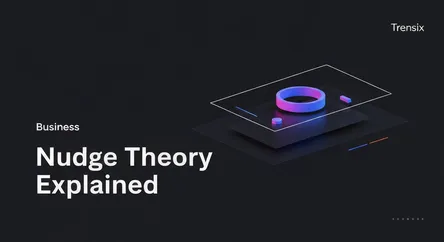Business
Nudge Theory Explained

Discover Nudge Theory, the behavioral economics concept of influencing choices without restricting them. Learn how small prompts shape our decisions.
What is it?
Nudge Theory is a concept in behavioral economics, popularized by Richard H. Thaler and Cass R. Sunstein. It proposes that positive reinforcement and indirect suggestions can influence people's decisions and actions without forbidding any options or significantly changing their economic incentives. This is often referred to as "choice architecture." A classic example is placing healthy food at eye level in a cafeteria to encourage better eating habits. It's not about forcing a choice, but making a preferred option easier or more appealing.
Why is it trending?
Nudge Theory is gaining traction because governments and businesses see it as a powerful, low-cost tool to guide behavior. Public policy makers use it to encourage actions like organ donation (by making it an opt-out system), pension savings, and timely tax payments. In marketing, companies use nudges to steer customers towards specific products or subscription plans. Its appeal lies in its subtlety and effectiveness in achieving goals without resorting to mandates or bans, which can often face public resistance.
How does it affect people?
Nudges influence everyday decisions, often without our conscious awareness. Supermarket layouts that place essential items far apart, default settings on apps, or reminders to reduce energy consumption are all forms of nudging. While often used for beneficial outcomes, like promoting public health or financial well-being, the concept raises ethical questions. Critics worry about the potential for manipulation and the lack of transparency, debating where the line is between a helpful nudge and covert persuasion that undermines individual autonomy.